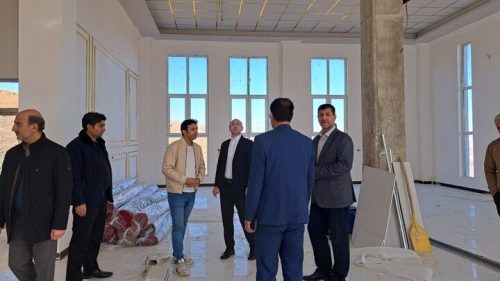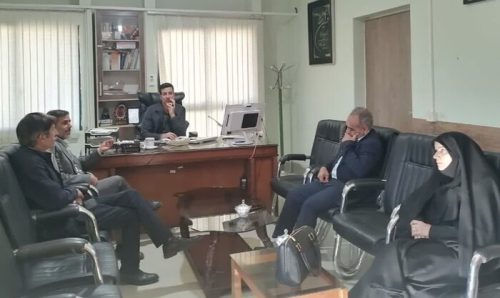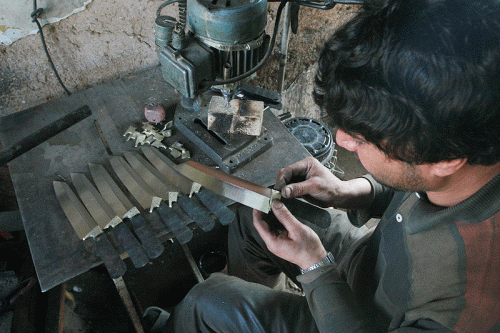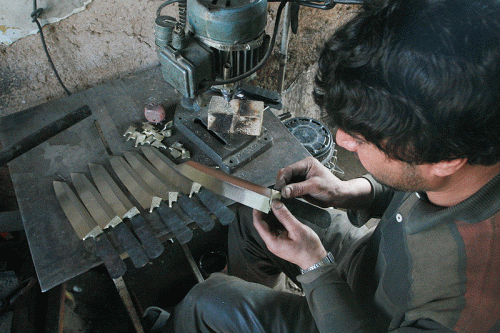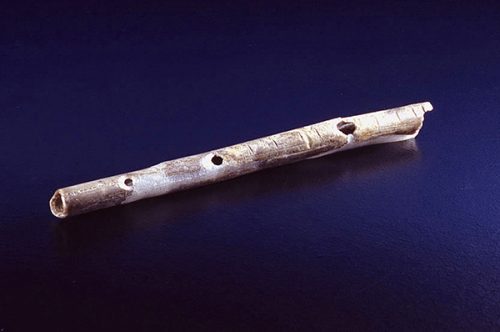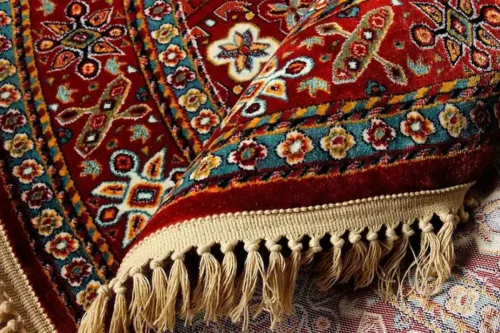A Researcher: Commercial Approach to Handicrafts is Prohibited
Impact of Commercial Perspective on Handicraft Quality
A researcher: Commercial view on handicrafts is prohibited. This commercial perspective by the Ministry of Cultural Heritage officials directly affects the quality of products. Instead of focusing on preserving originality and traditional arts, producers are forced to increase production volume, leading to a decline in quality and cultural value of handicrafts. This change in perspective has resulted in lower quality handmade products being replaced by machine-made ones, causing a loss in the global market.
Main Challenges of Traditional Yazd Handicrafts in the Global Market
A researcher: Commercial view on handicrafts is prohibited. Traditional Yazd handicrafts face numerous challenges in the global market. Diminished product quality, insufficient support for producers, and competition with cheaper, machine-made products are among these challenges. Moreover, the lack of knowledge and understanding by authorities about the real needs of the industry hinders the development and improvement of product quality. These factors have prevented traditional Yazd handicrafts from maintaining their desirable position in the global market.
Marketing Obligation Without Preserving Originality in Handicrafts
A researcher: Commercial view on handicrafts is prohibited. A significant issue in handicrafts is the obligation for more marketing without preserving originality. To attract market attention, producers are encouraged to mass-produce, resulting in decreased quality and originality of products. This not only leads to the extinction of traditional arts but also reduces customer trust and results in non-handmade products replacing lower quality handmade ones.
Role of Government Support in Handicraft Development
A researcher: Commercial view on handicrafts is prohibited. Government support plays a key role in the development and preservation of handicrafts. Providing financial facilities, specialized training, and creating suitable markets for product sale can help maintain quality and increase demand. However, in many cases, the commercial perspective of officials has directed these supports towards increasing production volume and reducing costs, resulting in decreased quality and cultural value of handicrafts.
Traditional Yazd Businesses and Their Challenges
A researcher: Commercial view on handicrafts is prohibited. Traditional businesses in Yazd face numerous challenges, including increased production costs, lack of quality raw materials, and absence of suitable target markets. Additionally, consumers’ lack of awareness of the true value of handmade products hampers the growth of these businesses. These challenges have led many traditional producers to shift towards machine production, which ultimately results in decreased quality and authenticity of products.
Examples of Weak Handmade Production: Termeh Case
A researcher: Commercial view on handicrafts is prohibited. Termeh is one of the standout examples of weak handmade production. Nowadays, Termehs are entirely machine-made and produced from synthetic fibers, but due to insufficient public and authorities’ awareness, these products are sold at high prices as handicrafts. This situation not only leads to a decrease in the true value of Termehs, but has also caused authentic handmade products of this industry to be replaced by synthetic ones.
Suggested Solutions for Improving Handicrafts’ Condition
A researcher: Commercial view on handicrafts is prohibited. To improve the condition of handicrafts, it has been suggested that the process starts from the officials and then extends to ordinary people. Promoting and introducing authentic and traditional handicrafts through exhibitions, holding educational workshops, and utilizing digital marketing can help increase awareness and support for this industry. Additionally, emphasizing that handicrafts are a cultural product first, followed by commercial, can prevent quality degradation and loss of originality.
Importance of Distinguishing Between Handmade and Machine-Made Products
A researcher: Commercial view on handicrafts is prohibited. One of the important issues in preserving the value of handicrafts is the ability to distinguish between handmade and machine-made products. With the increase in machine production and lower quality, distinguishing genuine products from fake ones has become essential. Establishing clear standards to differentiate handmade products and enhancing consumer awareness in this field can help preserve authenticity and increase demand for real products.
Impact of Handicrafts on Cultural Heritage and Economic Development
A researcher: Commercial view on handicrafts is prohibited. Handicrafts not only constitute an important part of the country’s cultural heritage but can also play a significant role in economic development and sustainable employment creation. With proper support for this industry, cultural values can be preserved while also contributing to the region’s economic growth. This requires a change in commercial perspective and serious support from the government and society.
FAQ
- Why does the researcher object to the commercialization of handicrafts?
- The researcher believes that a commercial perspective on handicrafts leads to a decrease in quality and loss of originality.
- What are the major issues in traditional Yazd handicrafts and textiles?
- Lack of public and official recognition of handicrafts, production of non-handmade and machine-made products instead of authentic handicrafts, and the shutdown of traditional workshops are the main issues.
- How many people are active in the handicraft sector in Yazd?
- Approximately three thousand people are active in the Yazd handicraft sector.
- What field has the researcher studied in Yazd’s handicrafts?
- The researcher is active in the field of traditional Yazd textiles, producing traditional textiles such as Zari weaving, brocade, handwoven Termeh, and Ilamband.
- What does the researcher consider the most important problem in handicrafts?
- The most important problem is the lack of public and official recognition of handicrafts.
- How does the lack of official recognition affect handicrafts?
- This lack of recognition leads to non-handmade and machine-made products being offered instead of authentic handicrafts, reducing quality.
- Examples of the impact of commercialization on handicrafts?
- Machine-made Termeh produced from synthetic fibers instead of authentic handwoven Termeh is an example of the impact of commercialization.
- Why is machine-made Termeh problematic?
- Machine-made Termeh, despite being high priced, has less quality and does not preserve its originality.
- How does the researcher speak about the status of traditional Yazd textiles?
- The researcher declares that traditional Yazd textiles are disappearing and traditional workshops are becoming obsolete.
- What solution does the researcher suggest for improving the condition of handicrafts?
- Promoting and introducing authentic and traditional handicrafts should start with officials and extend to the general public to increase awareness and support.
- Why is accepting handicrafts as a cultural product important?
- Because handicrafts are cultural products and a purely commercial view leads to quality decline and loss of originality.
- How does commercialization affect the quality of handicrafts?
- Producers are forced to decrease work quality and increase production quantity, which leads to a decline in the final quality of handicrafts.
- What types of textiles has the researcher used in their studies?
- The researcher has used obsolete Yazd textiles like Zari weaving, brocade, handwoven Termeh, and Ilamband.
- How can public and official recognition of handicrafts be increased?
- By promoting cultural values through officials and general education among the public, recognition and thus support for handicrafts can be increased.
- What impact has capitalism had on handicrafts?
- The flow of capitalism has led to the downfall of traditional textiles, as the focus on more profit and mass production puts quality under pressure.
- How is Yazd currently facing the situation of traditional textiles?
- Once the hub of traditional textiles, Yazd is now witnessing the closure of traditional textile workshops.
- Why are machine-made products offered instead of authentic handicrafts?
- Due to a lack of recognition and support for authentic handicrafts, producers prefer producing machine-made products that are quicker and cheaper.
- What activities has the researcher conducted in the field of textile production?
- The researcher is active in producing traditional textiles such as Zari weaving, brocade, handwoven Termeh, and Ilamband.
News Source : https://www.irna.ir/news/85692372/%DB%8C%DA%A9-%D9%BE%DA%98%D9%88%D9%87%D8%B4%DA%AF%D8%B1-%D9%86%DA%AF%D8%A7%D9%87-%D8%AA%D8%AC%D8%A7%D8%B1%DB%8C-%D8%A8%D9%87-%D8%B5%D9%86%D8%A7%DB%8C%D8%B9-%D8%AF%D8%B3%D8%AA%DB%8C-%D9%85%D9%85%D9%86%D9%88%D8%B9

